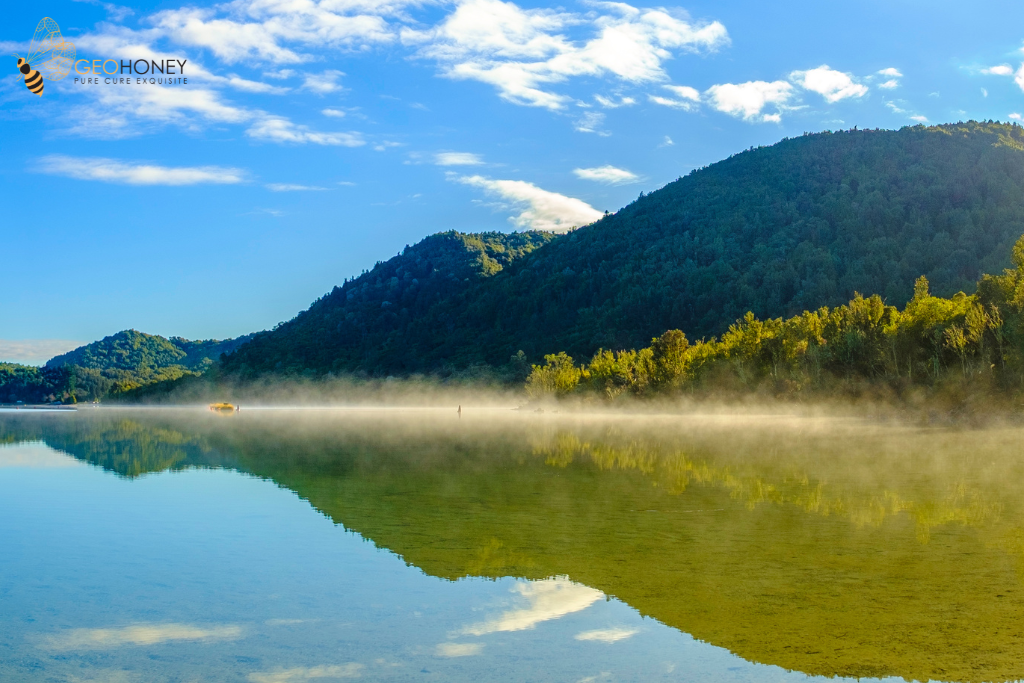- Tokyo: 22:31
- Singapore: 21:31
- Dubai: 17:31
- London: 13:31
- New York: 08:31
Beautiful Blue Lakes Are Turning Green Brown Due To Climatic Changes

Millions of lakes across the world are found in every kind of environment and on every continent. Most lakes contain freshwater from rain, melting ice, streams, snow, and groundwater seepage. But, these bluewater lakes are at higher risk these days. A new study revealed that disturbing climate scenarios and global warming are causing these lakes to lose their color.
Research published in the journal Geophysical Research Letters earlier this month has shown that climate plays a key role in the color of lakes, turning them green and brown due to increased global warming.
Lakes on Earth fall into two major color groups, blue, green, and brown. Blue lakes makeup only 1/3rd of the total planet's lakes and are rare. In general, algae and sediments are responsible for impacting the lake's color, but the latest study has found that precipitation, air temperature, lake depth & elevation are also responsible for the color change.
Green, brown lakes are commonly found in drier regions, continental interiors, and along the coastline. On the other hand, blue lakes are generally found in cool, high-latitude regions with winter ice cover.
The study was mainly focused on studying climate's influence on lake color. The results thus showed that if the global temperature continues to rise, the blue lake color will also change. This change in climatic conditions will also decrease the percentage of blue lakes.
Catherine O'Reilly, an aquatic ecologist at Illinois State University and author of the new study, says that warmer water, which produces more algal blooms, will tend to shift lakes towards green color. A lake's color can occasionally change, to a limited extent, because of changes in algal development, so the authors described lake color by evaluating frequent lake color over seven years. The outcomes can be investigated through an interactive map the authors developed.
Moreover, the new study investigated what various levels of warming could mean for watercolor if environmental change perseveres. The review finds environmental change might decrease the number of blue lakes, many of which are found in the Rocky Mountains, northeastern Canada, northern Europe, and New Zealand.
Americans usually drink water from lakes, streams, and groundwater sources. However, researchers noticed that one outcome of lake color change could be an expansion in water treatment costs since the color is the key metric in determining water quality.
"Assuming you're involving lakes for fisheries or food or drinking water, changes in water quality that are reasonably happening when lakes become greener are likely to mean it will be costlier to treat that water," said O'Reilly.
"There may be periods where the water isn't usable, and marine species could not be available, so we won't get a similar environment benefits from those lakes when they shift from blue to green."
Changing lake color could also influence social or recreational activities, researchers added. As worldwide temperatures increase, lakes in northern Europe will, in all probability, lose winter ice cover, which could mean less cold-weather activities.
"No one needs to swim in a green lake," O'Reilly said. "So tastefully, a portion of the lakes that we could have generally considered a refuge or spiritual places, those places might be disappearing as the color changes."
News Source: https://www.sciencedaily.com/releases/2022/09/220923090925.htm




I can’t imagine a world without the beautiful t lakes in there. They are the core of any landscape and the center of the living habitat.
Be responsible enough to know what is good for our planet.
Even the beautiful lakes are getting affected by climate change and global warming. So as the water habitat also.